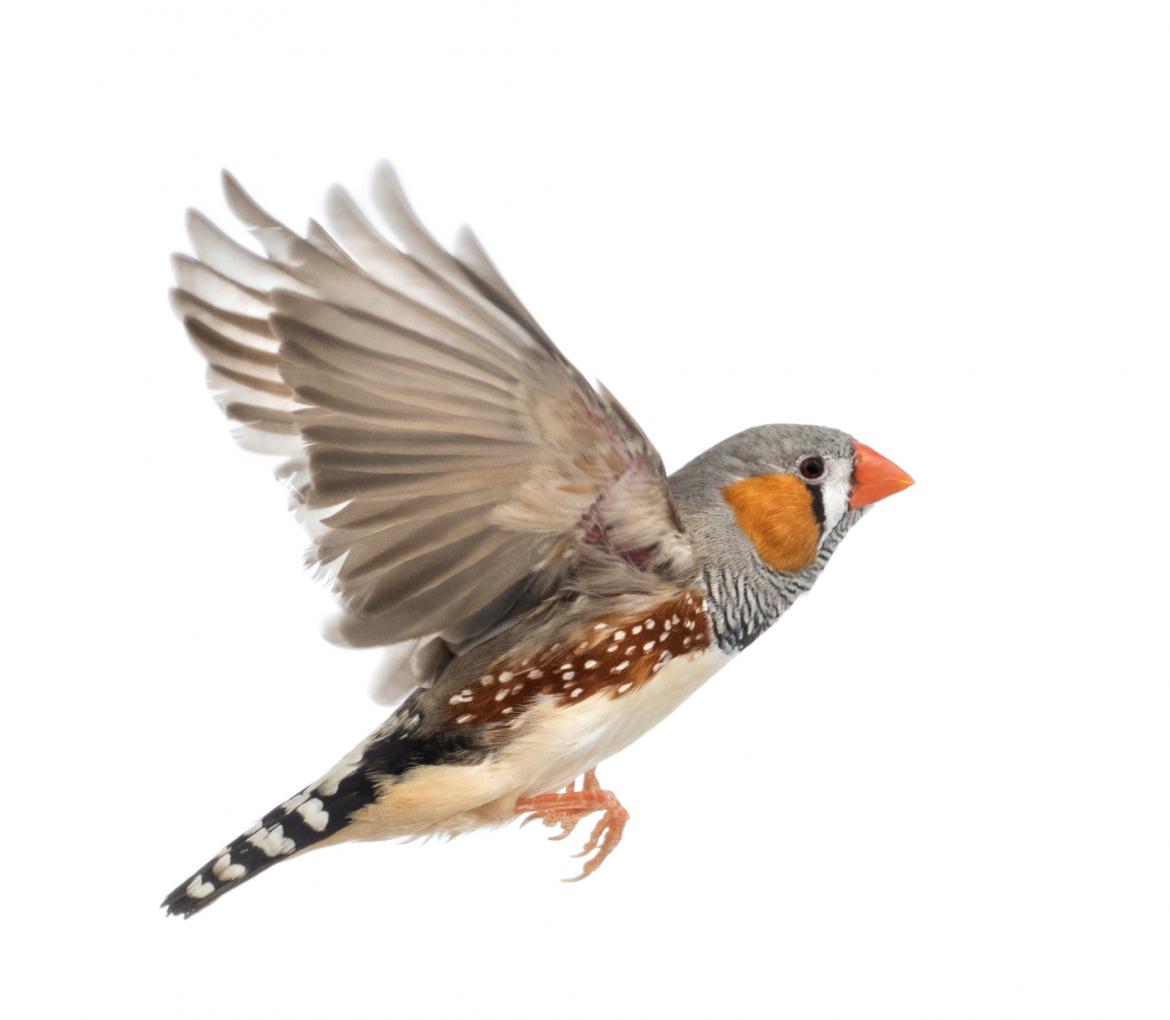
Photo by GlobalP
ABSTRACT
Birds that use high flapping frequencies can modulate aerodynamic force by varying wing velocity, which is primarily a function of stroke amplitude and wingbeat frequency. Previous measurements from zebra finches (Taeniopygia guttata) flying across a range of speeds in a wind tunnel demonstrate that although the birds modulated both wingbeat kinematic parameters, they exhibited greater changes in stroke amplitude. These two kinematic parameters contribute equally to aerodynamic force, so the preference for modulating amplitude over frequency may instead derive from limitations of muscle physiology at high frequency. We tested this hypothesis by developing a novel in situ work loop approach to measure muscle force and power output from the whole pectoralis major of zebra finches. This method allowed for multiple measurements over several hours without significant degradation in muscle power. We explored the parameter space of stimulus, strain amplitude and cycle frequencies measured previously from zebra finches, which revealed overall high net power output of the muscle, despite substantial levels of counter-productive power during muscle lengthening. We directly compared how changes to muscle shortening velocity via strain amplitude and cycle frequency affected muscle power. Increases in strain amplitude led to increased power output during shortening with little to no change in power output during lengthening. In contrast, increases in cycle frequency did not lead to increased power during shortening but instead increased counter-productive power during lengthening. These results demonstrate why at high wingbeat frequency, increasing wing stroke amplitude could be a more effective mechanism to cope with increased aerodynamic demands.